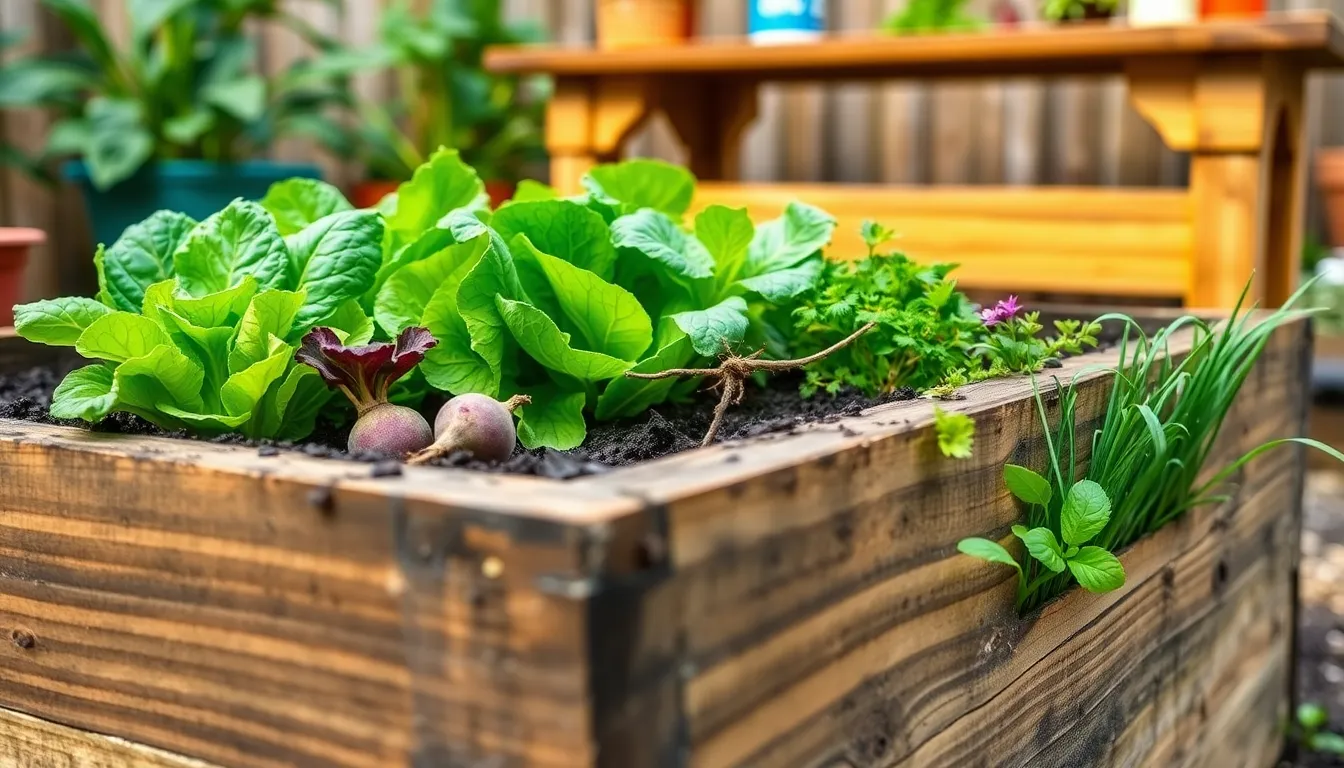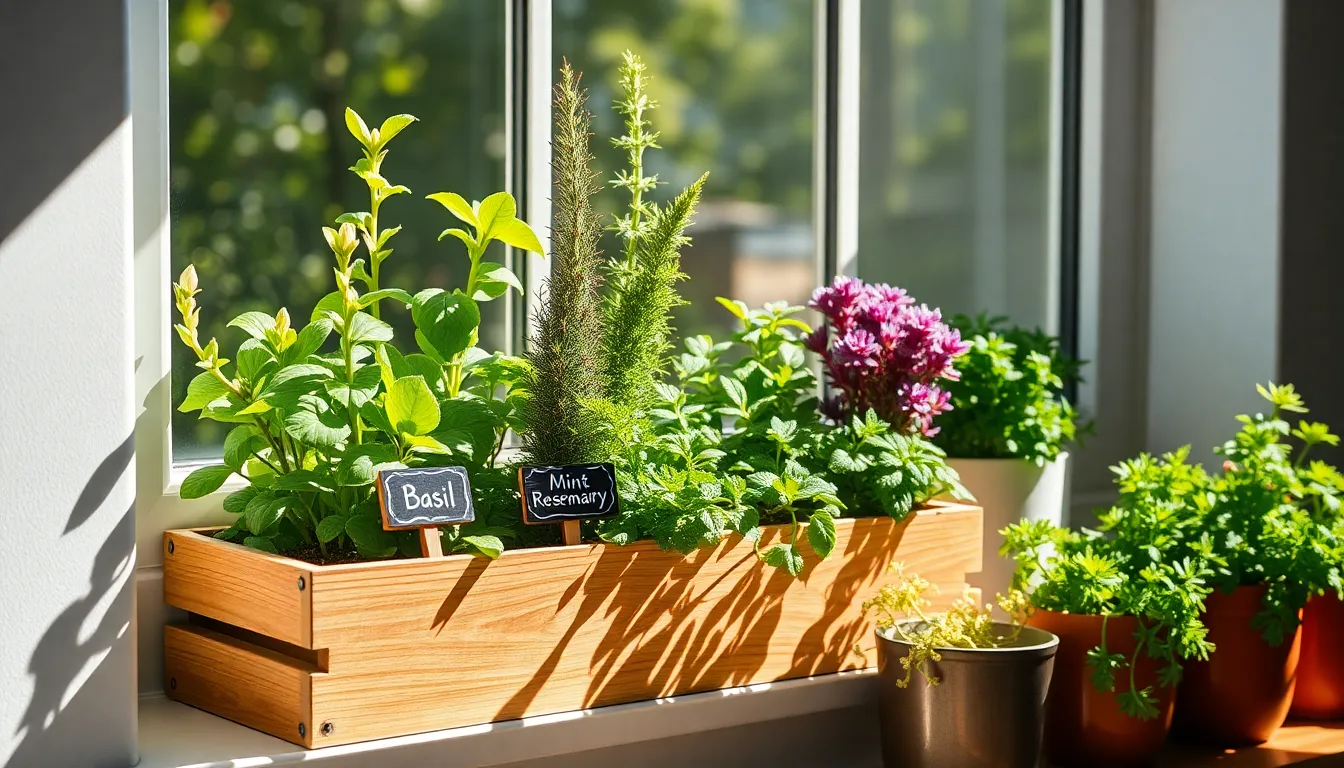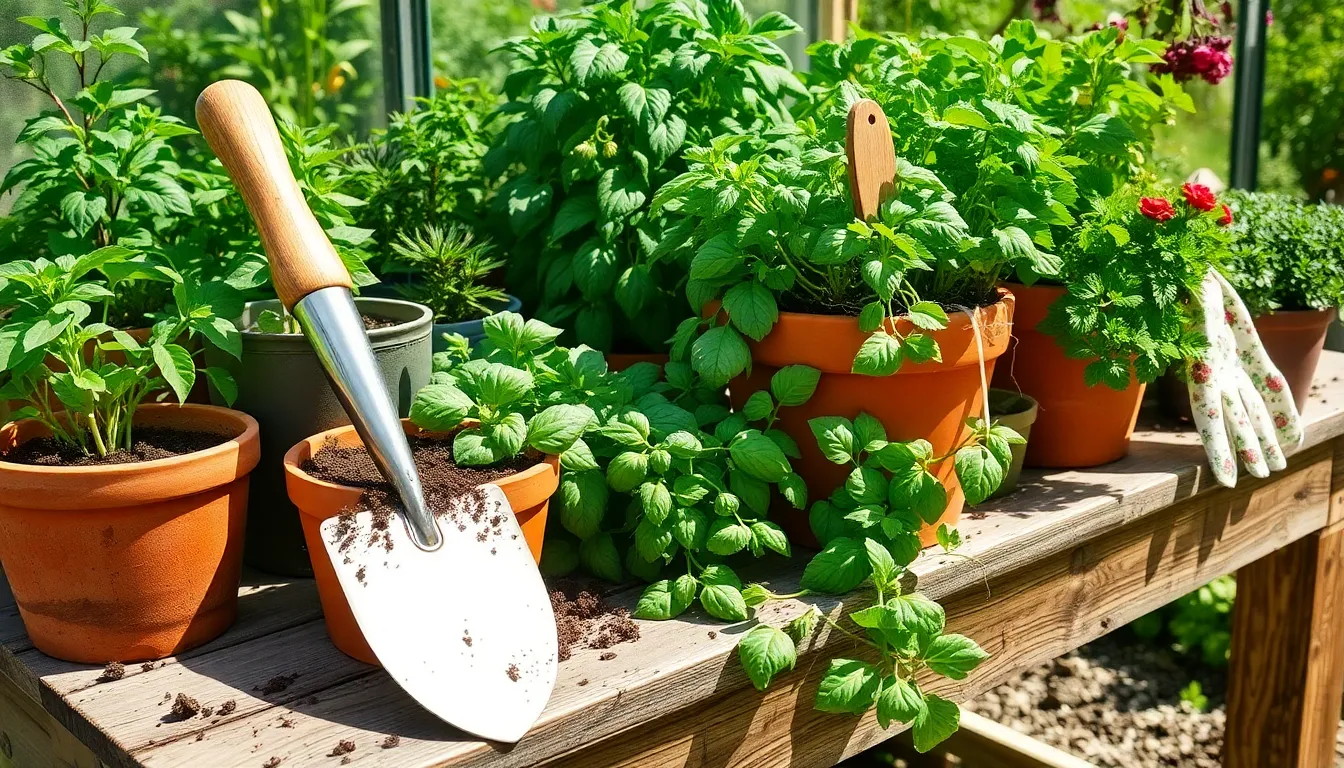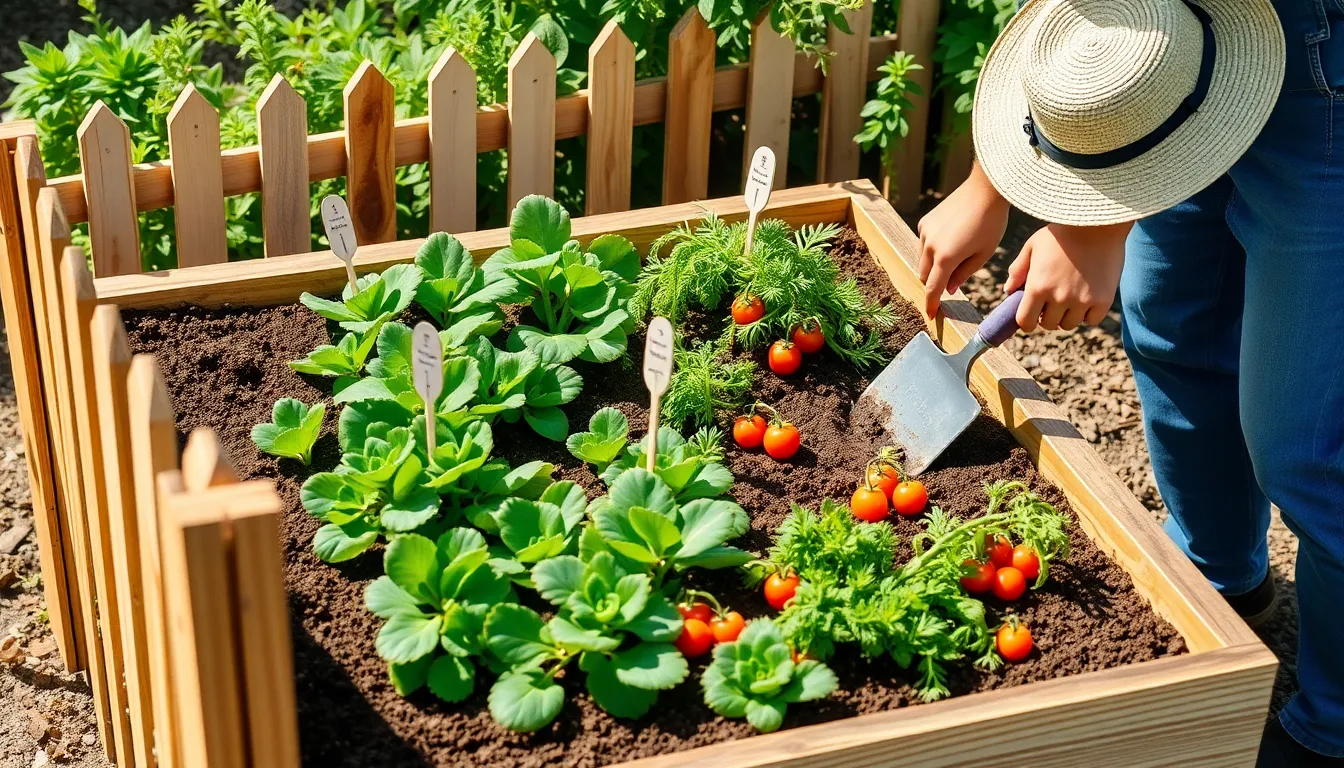Building a raised garden bed on a budget is a gratifying endeavor that invites both novice and seasoned gardeners to cultivate a lush and thriving garden space without breaking the bank. With a bit of creativity and resourcefulness, you can transform your backyard into a flourishing oasis, reaping the benefits of fresh produce and vibrant blooms. Whether you’re just beginning your gardening journey or have years of experience under your belt, constructing a raised bed can enhance your growing potential and simplify your gardening routine.
In this guide, you’ll discover how to utilize everyday materials and savvy techniques to craft a functional and beautiful raised bed. We’ll walk you through the process step-by-step, ensuring that budget constraints never stand in the way of your green thumb aspirations. From selecting the perfect site to choosing the most cost-effective materials, you’ll gain the confidence and knowledge to create a custom garden bed tailored to your space and needs. Embrace this opportunity to make gardening more accessible and enjoyable, proving that remarkable gardens can indeed be built with modest means.
Select Affordable Materials
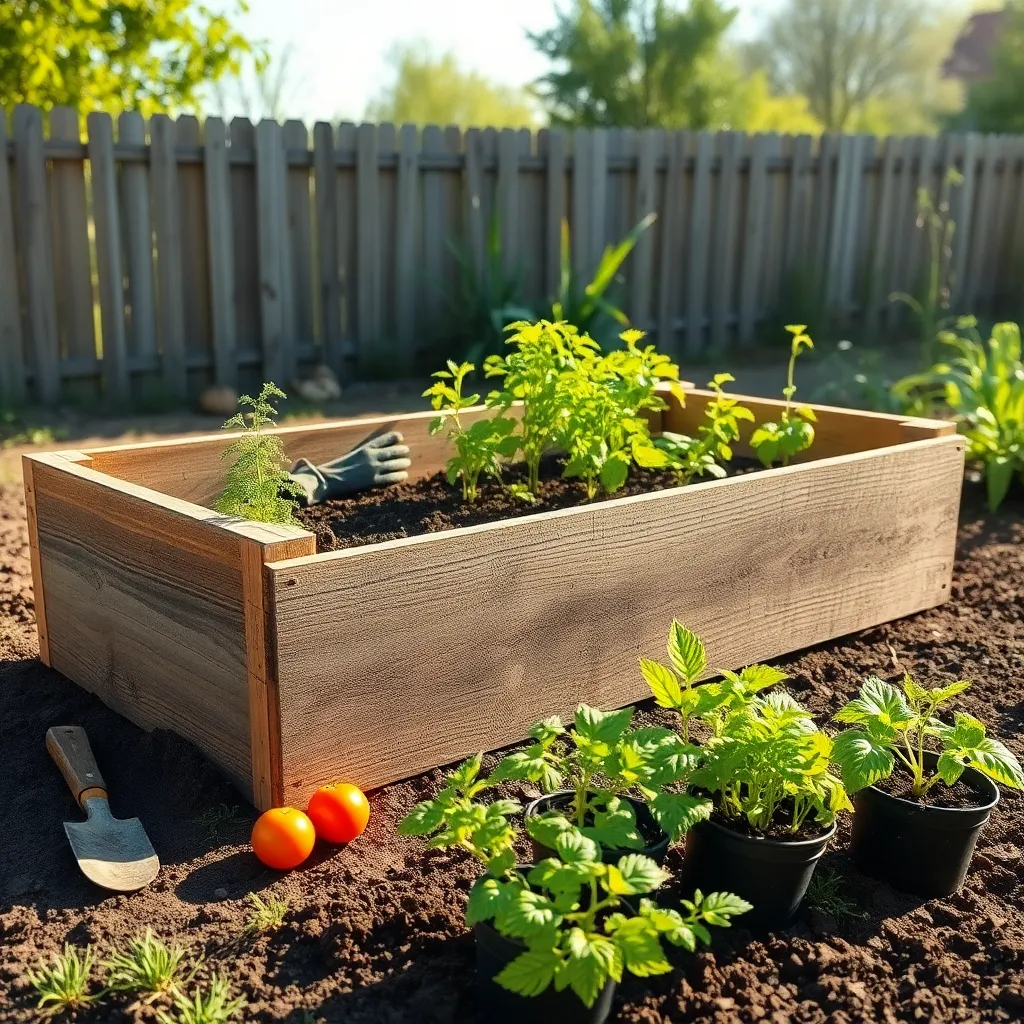
When building a raised garden bed on a budget, consider using reclaimed wood as a cost-effective material. Look for pallets or old fence boards that are still in good condition, as these can often be acquired for free or at a low cost from local businesses or online marketplaces.
For those seeking a more durable option, concrete blocks are an excellent choice. These blocks are not only affordable but also easy to assemble and can withstand various weather conditions, providing a long-lasting structure for your garden bed.
Another option is using straw bales, which can serve as both the structure and growing medium. Straw bales are inexpensive and can be sourced from local farms, making them an eco-friendly choice that enriches the soil as they decompose over time.
Consider lining your garden bed with a weed barrier fabric to prolong its life and minimize maintenance. This fabric is affordable and helps to keep weeds at bay, ensuring that your plants have the best chance to thrive without competition.
Measure and Mark the Area
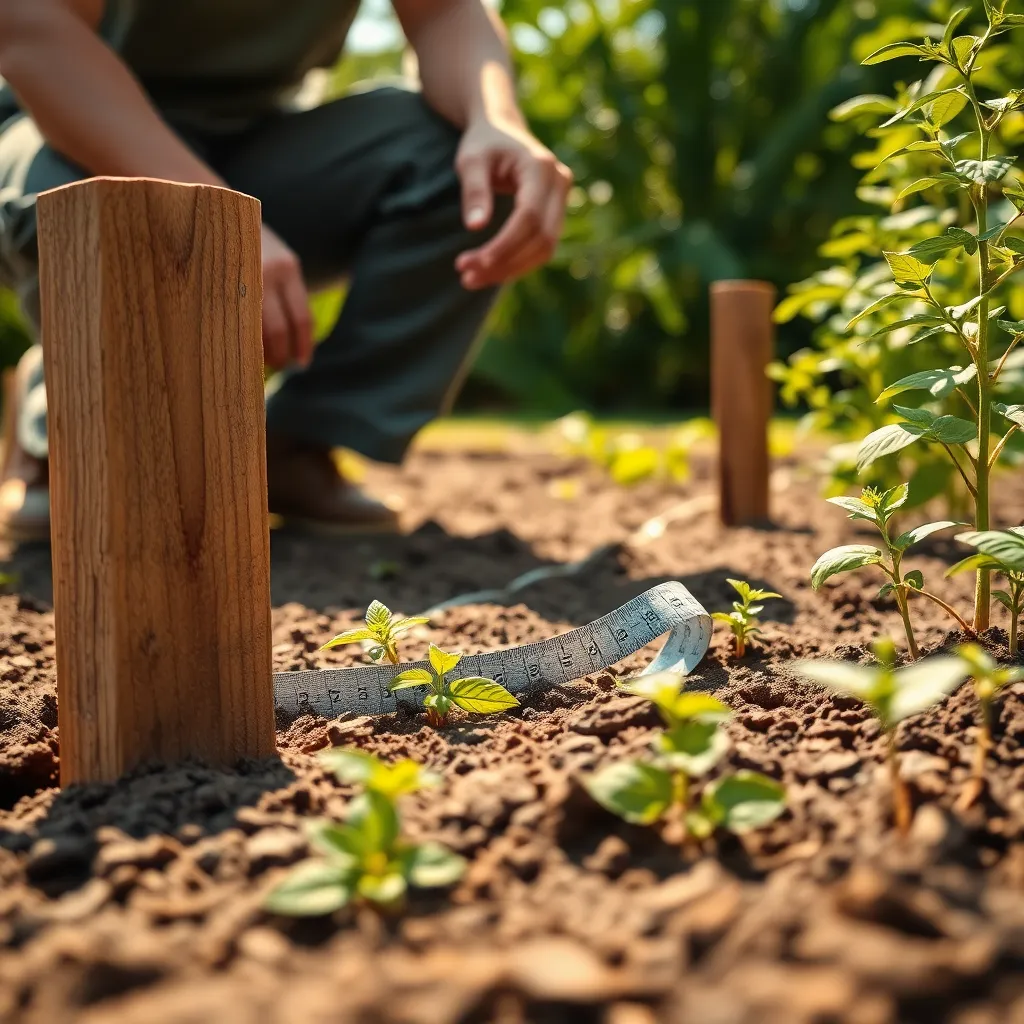
Before you start building your raised garden bed, it’s essential to accurately measure and mark out the area where it will be placed. Use a measuring tape to determine the length and width of the space, ensuring it fits comfortably within your garden layout.
Choose a spot that receives at least six to eight hours of sunlight per day, as most vegetables and flowers thrive in sunny conditions. If you’re planning to grow shade-loving plants, such as lettuce or spinach, look for a partially shaded area instead.
Once you’ve decided on the location, use stakes and string to create a clear outline of your garden bed. This will help you visualize the space and make any necessary adjustments before construction begins.
It’s also important to check the soil drainage in your chosen spot. Dig a small hole, fill it with water, and observe how quickly it drains; ideally, it should drain within one to two hours, indicating good drainage. If the drainage is poor, consider adding a layer of gravel at the bottom of your bed or choosing a different location.
For those working in a sloped area, consider leveling the ground or building a terraced bed to ensure even water distribution. This will prevent water from pooling at one end, which could lead to root rot in some plants.
Assemble the Frame Securely
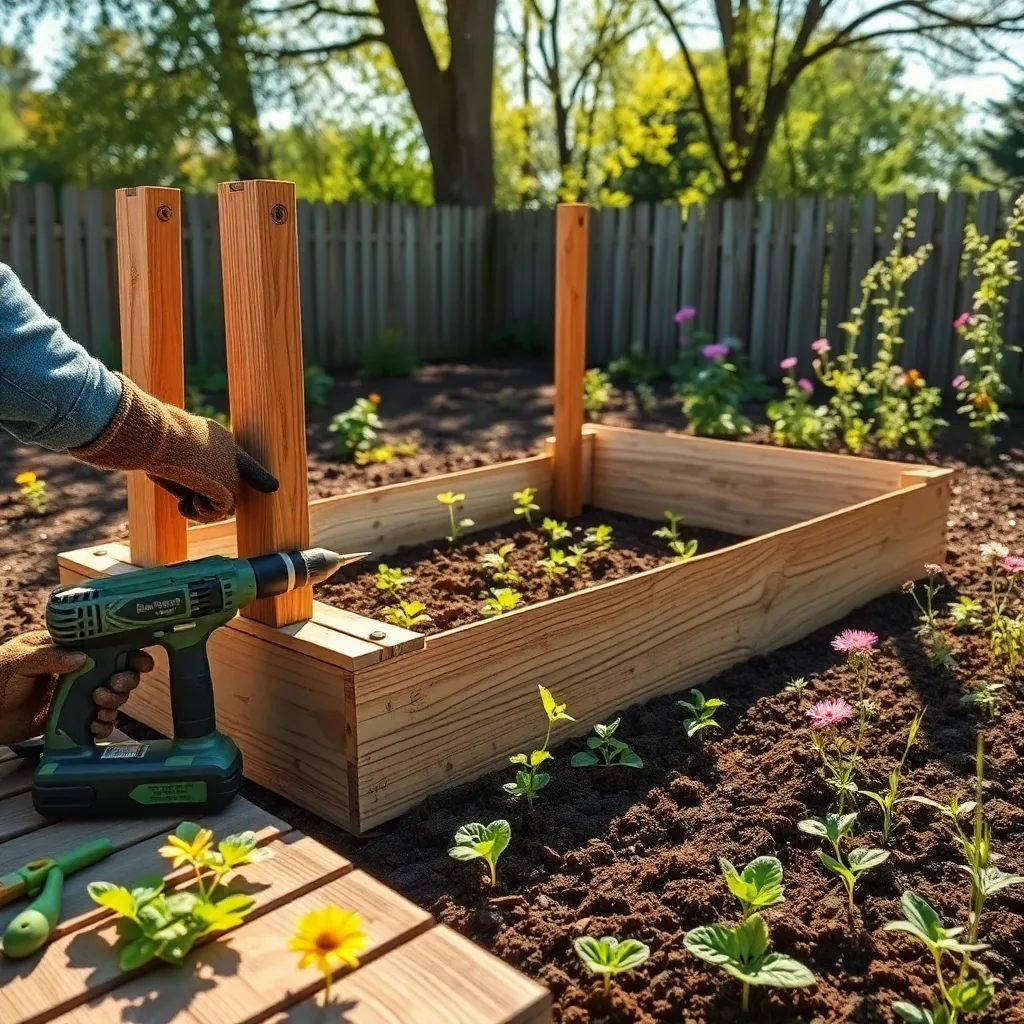
After marking the area for your raised garden bed, it’s time to assemble the frame securely. Begin by selecting sturdy materials like untreated wood, which is affordable and safe for plants. Using a drill, pre-drill holes at each corner to prevent the wood from splitting as you insert screws. Ensure your screws are galvanized to withstand weather conditions and prevent rusting.
Position the wood pieces to form a rectangle or square, depending on your garden’s design. Align the corners precisely to maintain the structure’s integrity, which is crucial for holding soil and plants. Use a carpenter’s square to check that each corner forms a right angle, ensuring your frame is perfectly aligned.
For added stability, consider reinforcing each corner with metal brackets. These brackets provide additional support and help the frame withstand the pressure of wet soil. If you’re building a larger bed, add a middle brace across the longer sides to prevent bowing. This step is particularly important if your bed is over six feet long.
Once the frame is assembled, double-check its position to ensure it’s level. Use a spirit level tool to confirm that the frame sits evenly on the ground, which is crucial for proper drainage and plant growth. If necessary, adjust the soil beneath the frame until it sits flat. Securing your frame well sets a strong foundation for a thriving garden, encouraging you to move onto the next step with confidence.
Fill with Budget-Friendly Soil
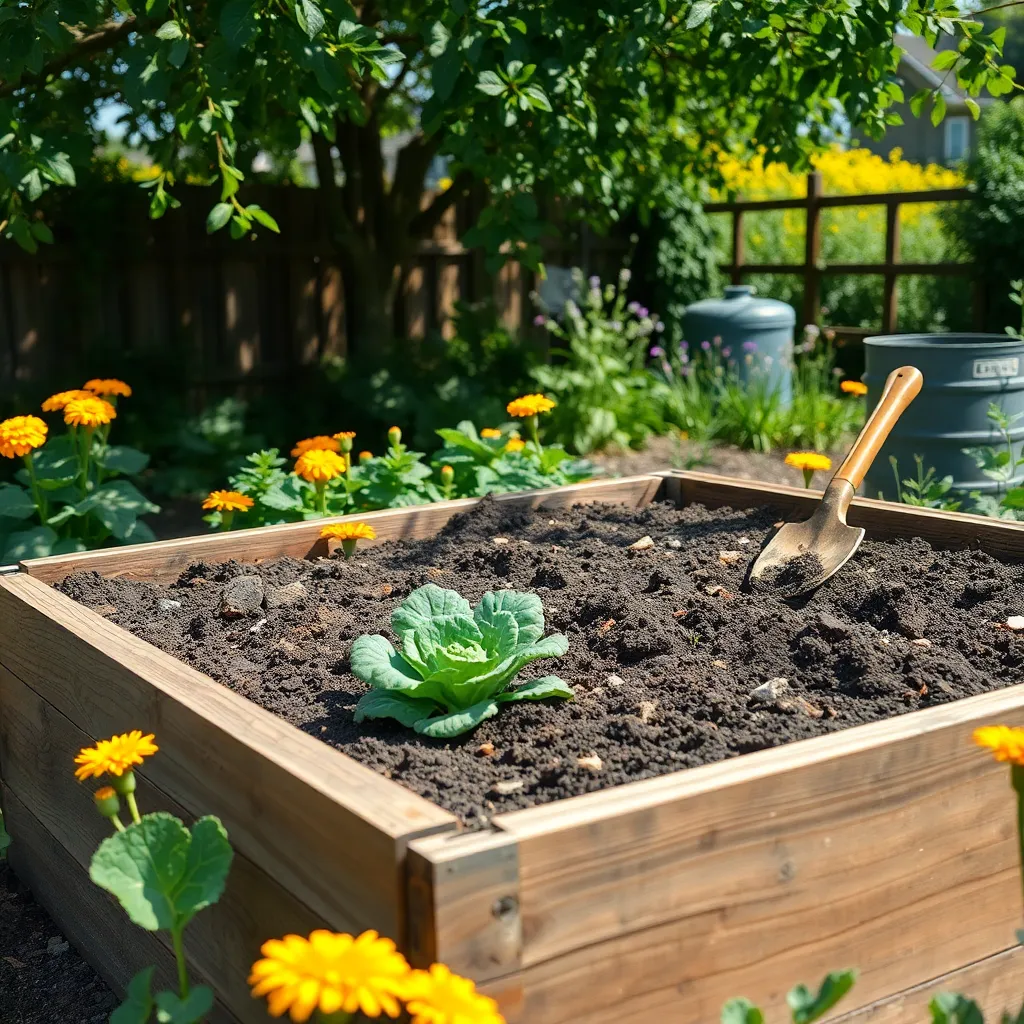
Filling your raised garden bed with budget-friendly soil doesn’t have to compromise the quality of your plants. Start by sourcing locally available materials like **compost**, **topsoil**, and **sand**, which can be mixed to create a nutrient-rich base.
Visit local landscaping suppliers or community composting sites for affordable options. Often, they offer bulk deals or community discounts, making it easier to obtain high-quality materials without breaking the bank.
Layering your soil mix is an effective technique to maximize plant health. Begin with a base layer of **twigs** or **coarse materials** for drainage, then add a layer of topsoil mixed with compost for nutrients.
To enhance the soil’s structure, incorporate **organic materials** such as shredded leaves or grass clippings. These materials not only improve aeration but also retain moisture, reducing the frequency of watering needed.
For advanced gardeners, consider adding **biochar** to the soil mix. This helps improve nutrient retention and supports beneficial microbial activity, which can lead to healthier, more productive plants over time.
Plant and Maintain Affordably
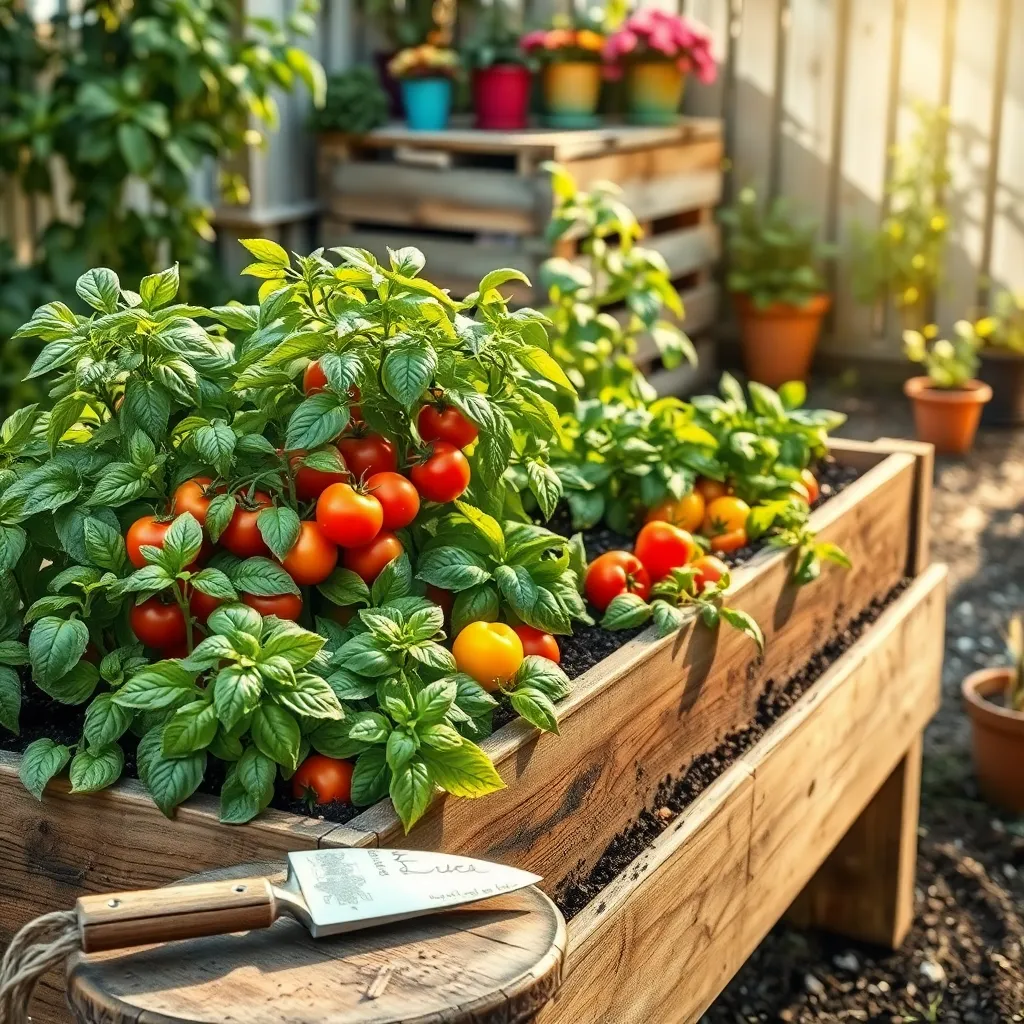
When planting your raised garden bed, consider choosing a mix of plants that thrive in similar conditions to maximize your success. Opt for hardy, easy-to-maintain varieties such as lettuce, radishes, and marigolds, which are both budget-friendly and forgiving for beginners.
To maintain your garden affordably, focus on consistent watering while avoiding overwatering. Using a soaker hose or drip irrigation system can be an inexpensive way to ensure your plants receive water directly at the root, reducing waste and promoting healthier growth.
Mulching is a cost-effective technique to retain moisture and reduce weeds. You can use readily available materials such as grass clippings or shredded leaves, which not only save money but also enrich the soil as they decompose.
Regularly inspect your plants for pests and diseases to catch any issues early. Encourage natural predators like ladybugs by planting companion plants, such as dill or fennel, which can help keep pest populations under control without costly interventions.
Conclusion: Growing Success with These Plants
In the journey of building a raised garden bed on a budget, we’ve uncovered five key relationship concepts: effective communication, collaboration, resourcefulness, patience, and shared goals. These principles not only help you create a thriving garden but also lay the foundation for nurturing healthy, enduring relationships. By practicing open communication, you ensure everyone is on the same page; through collaboration, you leverage each other’s strengths; resourcefulness encourages creative solutions; patience allows for growth at its own pace; and shared goals unite you in purpose.
As an immediate step, gather your loved ones and discuss a small project you can work on together, like planning your garden layout or sourcing materials sustainably. This will foster stronger bonds and a sense of accomplishment. Remember, nurturing relationships, much like gardening, requires consistent care and attention.
Don’t forget to save or bookmark this article for future reference, as these insights will guide you whenever you’re ready to take on new relationship challenges. As you sow the seeds of collaboration and understanding today, you’re investing in a future of relationship success that blossoms beautifully with time. Now, go ahead and cultivate those connections with confidence and joy!

